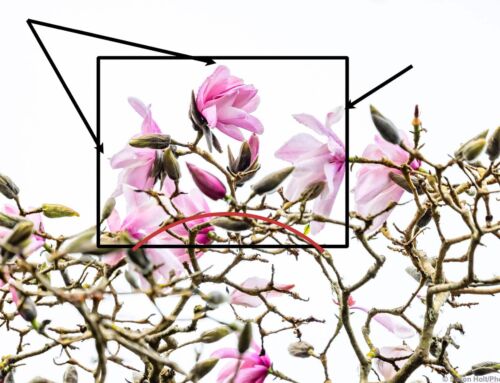How much photo retouching is acceptable?

Phormium ‘Maori Chief’ with Wisteria and Leucospermum – interpretation
This is a question I consider every time I work on my photos on the computer in the post production process. I hereby confess that I will sometimes change the photo to show what I thought I saw, rather than what the camera actually saw.
Years ago I started a series on the blog Gardening Gone Wild called “The Camera Always Lies“. I tried to make the point that every photographer makes the decision on what photo to take, how to crop it, and what to show to others. This whole process is a “lie” in order for the photographer to tell story that he or she wants to tell.
I saw this Phormium under a wisteria vine, tucked in Diana’s garden behind Leucospermum ‘Scarlet Ribbon’. What did the camera see?
Before and After Slider
What do you think? Was it okay to take out a few of those blemishes – the dead branch, the leafspot ?
And what about the opening photo with a Topaz art filter? It’s how I felt, but not exactly a realistic photo to appear in a garden magazine.
Oh well, this is not a garden magazine.









This is a philosophical question I’ve posed to several professional photographers in clinics and such, and the answer always depends on where there professional “head is at,” so to speak. A hardcore journalism photographer will say give it contrast appropriate for its intended medium, maybe correct the color, and step away. A travel photographer will say make it as sexy and inviting as you can, without overdoing the saturation. That includes removing an errant branch or power line.
I personally come from an illustration perspective, but I have a journalism mindset from college, so I try not to make the image “lie,” but also strive to bring out the truth of what my emotional min “saw” when snapping the exposure.
This is why I love RAW and its attendant sliders. Because the camera is just too objective to completely tell the “truth.”
Thanks for weighing in John. I too, come from a journalism mindset from college days but this only made me realize my own bias, even deciding when to snap the shutter at news events, was part of the editing process. In the end I think any of us in the communication business learns / tries to tell a story from a point of view of our own truth, whether we are doing from an art perspective or “straight”, and we hope the audience has the critical thinking skills to put it in their own context.